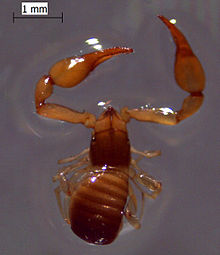
CENELEC is responsible for European standardization in the area of electrical engineering. Together with ETSI (telecommunications) and CEN, it forms the European system for technical standardization. Standards harmonised by these agencies are regularly adopted in many countries outside Europe which follow European technical standards. Although CENELEC works closely with the European Union, it is not an EU institution. Nevertheless, its standards are "EN" EU standards, thanks to EU Regulation 1025/2012.
Europe, the westernmost portion of Eurasia, is often divided into regions and subregions based on geographical, cultural or historical factors. Since there is no universal agreement on Europe's regional composition, the placement of individual countries may vary based on criteria being used. For instance, the Balkans is a distinct geographical region within Europe, but individual countries may alternatively be grouped into South-eastern Europe or Southern Europe.

Southeast Europe or Southeastern Europe (SEE) is a geographical sub-region of Europe, consisting primarily of the cultural region of the Balkans, as well as adjacent regions and archipelagos. There are overlapping and conflicting definitions of the region, due to political, economic, historical, cultural, and geographical considerations.

The Sironidae are a family of harvestmen with more than 60 described species.
East-Central Europe is the region between German-, Hungarian-, and West Slavic-speaking Europe and the East Slavic countries of Belarus, Russia, and Ukraine. Those lands are described as situated "between two": "between two worlds, between two stages, between two futures".

This is a list of the Romania national football team results from 2000 to 2019:
The 2019 FIBA Basketball World Cupqualification for the FIBA Europe region, began in August 2017 and concluded in February 2019. Contrary to previous years, no teams were automatically placed into the World Cup, so all FIBA Europe nations had to participate in qualification.
The Slovenia national football team represents Slovenia in association football and is controlled by the Football Association of Slovenia, the governing body for football in Slovenia. It competes as a member of the Union of European Football Associations (UEFA), which encompasses the countries of Europe. Slovenia joined UEFA and the International Federation of Association Football (FIFA) in 1992, a year after the country gained independence from the Socialist Federal Republic of Yugoslavia.

The EuroBasket 2022 qualification was a basketball competition that was played from November 2017 to February 2021, to determine the 20 FIBA Europe nations who would join the automatically qualified co-hosts Czech Republic, Georgia, Italy, and Germany at the EuroBasket 2022 finals tournament.

This is a list of the Poland national football team results from 2000 to 2019.
The EuroBasket Women 2023 qualification was held from November 2021 to February 2023 to decide the 14 teams to join the co-hosts Israel and Slovenia. It featured 38 teams split in ten groups of three or four teams. The ten group winners and the four best second-ranked teams qualified for the final tournament.
The EuroBasket Women 2025 qualification is held from November 2023 to February 2025 to decide the 12 teams to join the co-hosts Czech Republic, Germany, Greece and Italy. It features 36 teams split in eight groups of four teams. The eight group winners and the four best second-ranked teams qualify for the final tournament. The four co-hosts are placed in the same group.
Ephippiochthonius is a genus of pseudoscorpions in the Chthoniidae family. It was described in 1930 by Austrian arachnologist Max Beier. First introduced as a subgenus of Chthonius by Carl Ludwig Koch in 1843, it was subsequently elevated to genus level by Juan Antonio Zaragoza in 2017.






